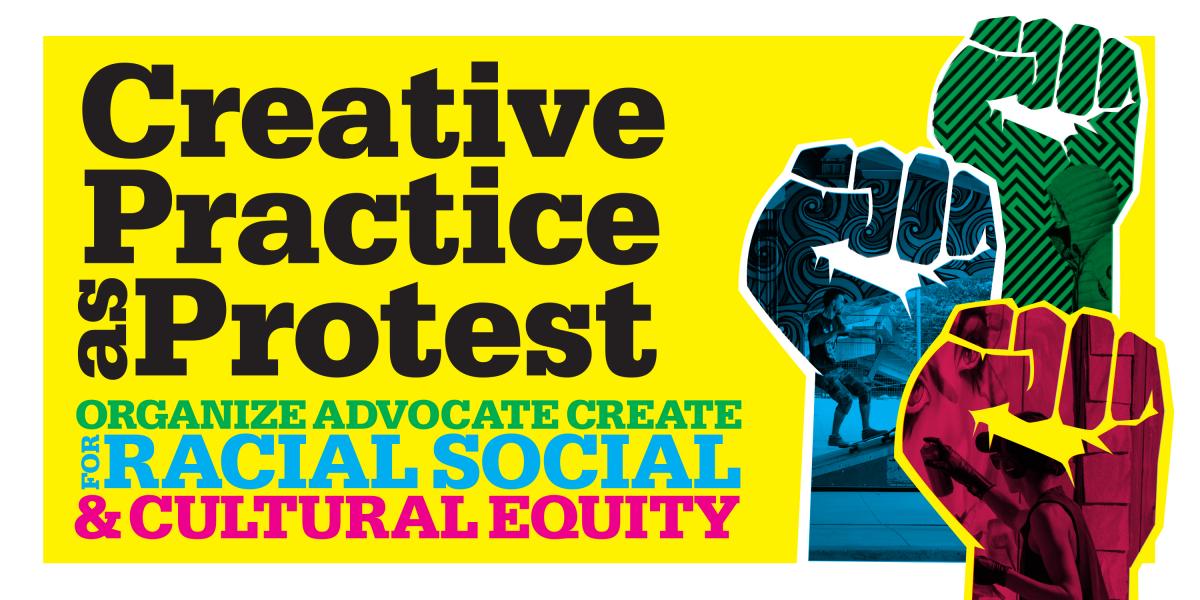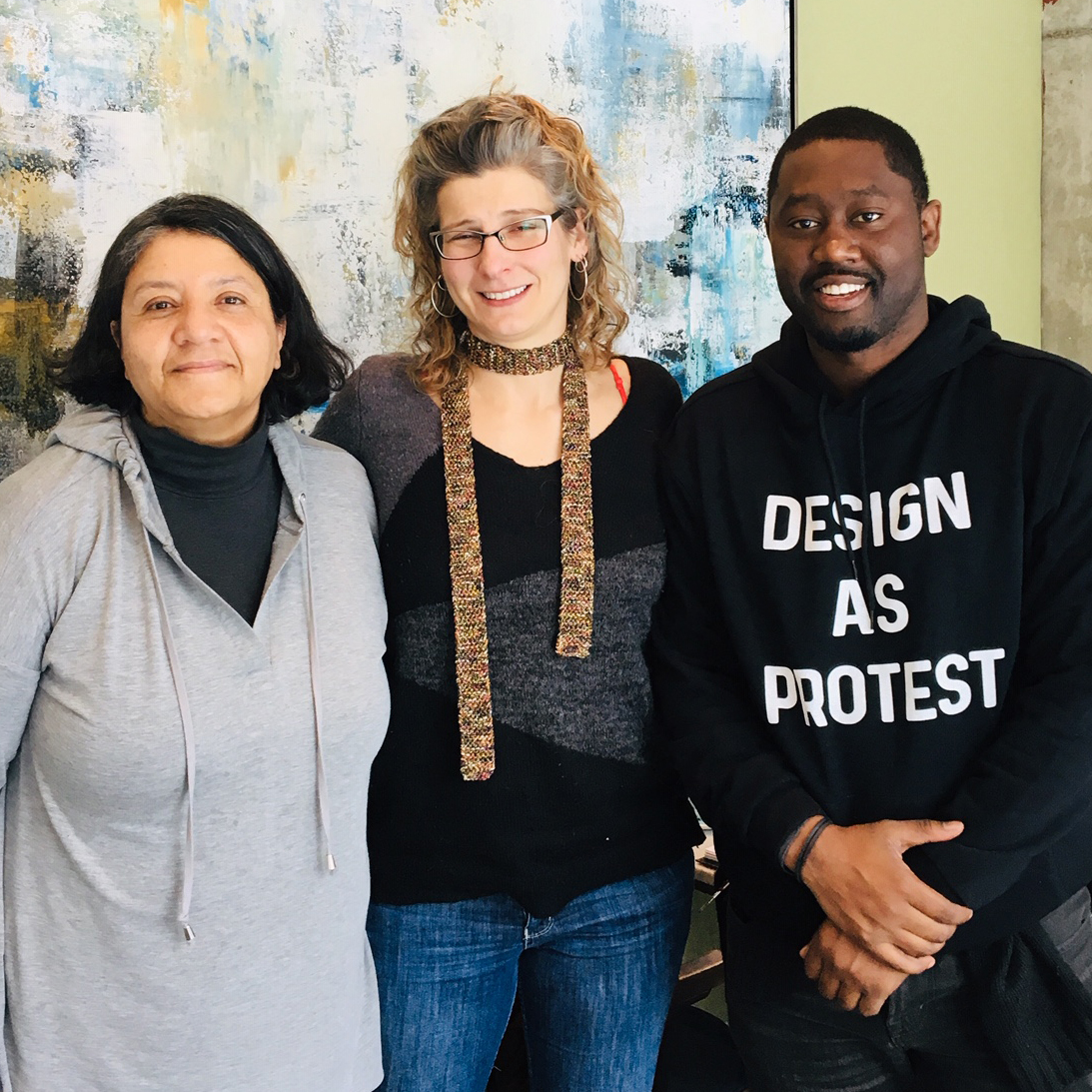Creative Practice As Protest

The Creative Practice as Protest Workshop was a youth workshop held in January 2020 and is part of the larger research project Design ManifesT.O. 2020. The workshop aimed to gather youth, community mentors, and placemaking leaders into a space where they could work and learn together. We partnered with design justice expert Bryan C. Lee Jr., founder of the non-profit design studio Colloqate.org in New Orleans to run the first half of the workshop in order to establish what co-design and social justice (the capacity to organize with others to accomplish ends that benefit the whole community1) can be. Bryan is an architect and sees design justice as “a deliberate process that centers the voice of the community throughout the timeline of a project,” who’s practice is “focused on expanding community access to, and building power through, the design of social, civic, and cultural spaces.”2
Youth from around Toronto were invited to participate in the 12-hour workshop that would address placemaking issues which emerged from the collected data — the lived experiences and group discussions — from the Design ManifesT.O. 2020 forums. The invite was made public and participants were chosen on a first-come, first-served basis. We invited seven creative mentors six of whom were able to participate. Many community leaders from a diverse range of organizations were invited to participate with only three community leaders confirming. Both the mentors and community leaders’ duties were to support youth participants with the creative exercises in order to generate new ideas or practical outcomes to what they determined were the key issues for exclusion and lack of empowerment in city planning and design processes. We were able to accommodate 30 youth participants between the age of 18–25. On the day of the workshop 26 youth showed up — 42 youth were on a waiting list.
The informal educational workshop sought to introduce youth to collaborative and respectful processes and to explore how this type of collaboration might work if expanded. Bryan C. Lee Jr. started the workshop by introducing students to concepts of power structures, social justice, design justice, and collaboration methods. Students were asked to discuss issues of place that arose from Design ManifesT.O. 2020 as well as issues that were important to them outside of the research findings.

Image: Primary Investigators Cheryl Giraudy, Associate professor OCAD University and Saskia van Kampen Assistant Professor San Francisco State University and Design Justice Expert/Founder of Colloqate.org Bryan C. Lee Jr.
Youth reflection on the morning session demonstrated their understanding of the need for equality and justice and how they are trying to locate ways to shift power dynamics and to give voice to all stakeholders. The student desire to shift power dynamics is further supported by a youth participant who acknowledged that their group became aware of the need to work with community members — they wrote in the follow up survey: “I appreciate that our discussion drove us to an unexpected but important place (i.e. methods of getting community input before creating community programming).”
Over the lunch break we invited Randall Adjei, award-winning founder of R.I.S.E (Reaching Intelligent Souls Everywhere) Edutainment and spoken word artist, to perform and speak with the youth participants. The intention was to introduce students to how placemaking through creative practice can happen in unexpected ways and how Randall is an embodiment of this practice.
The afternoon session gave youth participants a chance to work on the issues that they had pulled out of the morning session with the support of community leaders and mentors. The results of this exercise were inspired and included the following ideas and/or outcomes:
- Recreation: This group felt that the best way to access space was by disrupting the existing system and taking over and animating dead or unused public spaces, with or without permission.
- Shelter: This group designed a mobile “home” for shelter seekers that would provide resources about existing neighbourhood services and facilities.
- Transit: This group developed a campaign that critiques the city’s Vision Zero plan for cyclist and pedestrian safety in the city.
- Safety: This group generated a manifesto for community governance.They discussed what governance could look like without hierarchical power and how to create places that centers the people they are designed to serve.
- Civic space: This group developed an interactive art installation throughout the six Toronto boroughs which was a way of gamifiying methods for individuals to voice community needs.
In one of the group projects the participants noted that: “As a group, we are wary of replicating capitalist notions of success within this project. Therefore, our goals should be based on community values that are revisited at regular intervals.” This is an amazing insight in how interventions are never truly completed. Situations and communities evolve and so must the places that they live in.
In the follow-up survey students were happy to have had a chance to work together with autonomy: “(the morning session) was an interesting and novel way to frame our conversation for the rest of the day, in a way that was led by the participants rather than the facilitator”. Probably one of the most unexpected comment from the follow up survey stated that: “the workshop definitely had a little bit of a more intersectional approach than I imaged. Most, if not all of the youth participants were BIPOC. This statement resonated with the research team as it speaks to the lack of intersectional opportunities for youth.
1 Michael Novak, Social Justice: Not What You Think it is. Heritage Lectures. The Heritage Foundation,
Washington DC. no. 1138 (2019): 1.
2 “Home.” Colloqate Design, 2020. https://colloqate.org/.
